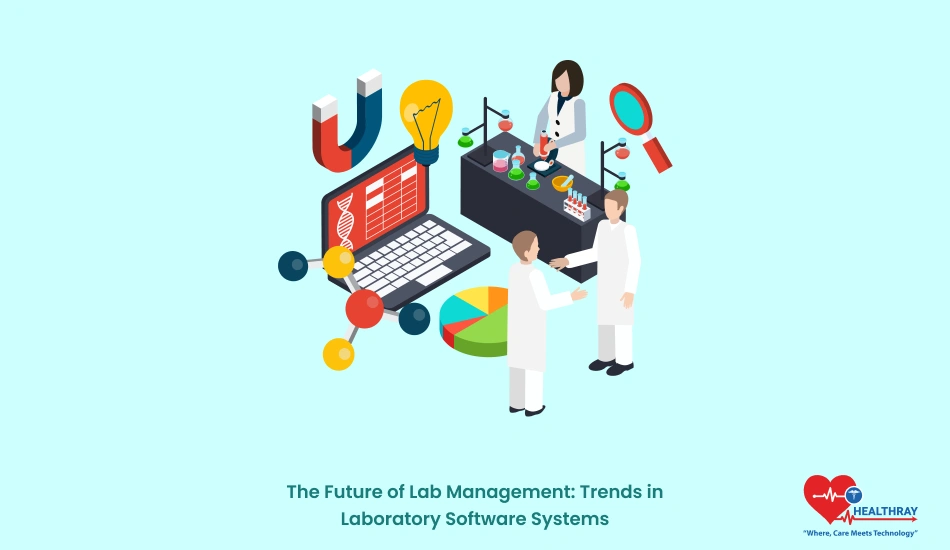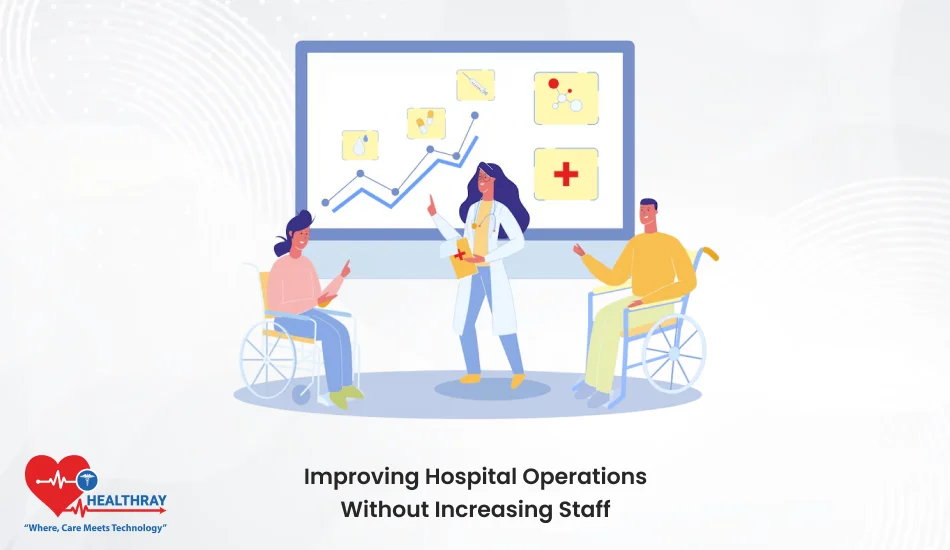Introduction
The management of laboratories is changing rapidly with the advance of systems like the Laboratory Information Management System. From artificial intelligence to cloud-based solutions, new tools are reshaping how labs work with everything from data management and workflow automation.
All those lab managers, software engineers, and health care executives wonder how all these may help in bringing improvements towards efficient lab operations without errors as well as compliance. Much is keeping innovations of Laboratory Information Management Systems, but a sector that requires accuracy and security of data really means differences in day-to-day work and long-term success in the end.
This article takes a look at the latest trends that will continue shaping the future of lab management. From artificial intelligence and machine learning to flexible, cloud-based Laboratory Information Management Systems, we will break down ways in which these technologies help labs work smarter, stay compliant, and make the most of efficiency.
Integration of AI and Machine Learning

AI and ML are no longer buzzwords but rather the management tools of labs. These technologies significantly empower labs to analyze data, automate routine tasks, and even predict trends from historical data.
This is meant for a lab manager. AI and ML usually mean less labor in terms of simple entry of data and more time to be spent on analysis and results. Just imagine how software automatically categorizes your test samples or flags unusual results for closer inspection. This is not a matter of improvements in efficiency alone but also lessens the chance of human errors, thus making it both faster and more accurate in lab operations.
AI-based predictive analytics can be another source of valuable insights. Labs can predict supplies based on prior patterns, thus preventing stock outs or overstocking, which can be expensive and not lean at the same time. Apart from these insights, ML algorithms will facilitate diagnosability for healthcare labs by recognizing small patterns that the naked eye may not have caught at the exact moment of high diagnosis.
However, implementing AI and ML is not trouble-free. Many labs face issues related to data quality, which can be fragmented or inconsistent, thereby complicating the training of AI algorithms. Another important aspect is privacy issues: these tools often require access to sensitive data. Solving these challenges requires careful planning, data cleaning, and collaboration between software developers and lab managers to ensure that these systems bring real added value to the lab operations.
Transition to Cloud-Based Solutions
Further momentum is being gathered in the market as more labs bypass conventional, fixed installation within the premises. The appeal, of course, lies in that cloud-based systems offer more flexibility, scale, and accessibility remotely compared to fixed systems. For labs, especially when it deals with large volumes of data or operates from multiple locations, cloud solutions unblock new dimensions for smooth data sharing and collaboration.
One of the greatest benefits that cloud-based LIMS has is easy scaling. Meaning labs can easily add or release capacity in terms of storage and processing as needs change without acquiring new hardware. This makes it a great choice for labs that go through cyclical peaks or are in a growth cycle. Another major advantage is remote access, so lab managers, technicians, and administrators can monitor and manage data from anywhere. This is beneficial for a hybrid or remote work setup.
But when it comes to cloud adoption, security and compliance top the list. Sensitive data has to be protected as best as possible. And this particularly concerns the healthcare administrator; being ensured that the provider of the cloud is compliant with the regulatory standards like HIPAA or GDPR. Many cloud providers have alleviated these concerns through strong encryption, regular security audits, and multi-layered controls for access.
Ultimately, it is changing the face of lab management as labs now have an unobtrusive means of managing complex data and responding to the changing needs of labs while keeping balance between accessibility and security to ensure that these labs remain productive without compromising their compliance.
Emphasis on Data Security and Compliance

Good laboratory management will include data security; this is an issue involving both technical and nontechnical matters since it has to do with the relationship one needs to maintain with the customer and with compliance with regulations. Today, in any lab, volumes of sensitive data-from patient information to research findings-need secure, compliant systems such as a LIMS Management System.
The current legal and financial implications of a data breach are most dire in health care when medical records are accessed. To reduce these risks, advanced security features are also being included in LIMS Management Systems. Encrypted access controls, for example, will be used in regulating user access, while routine security audits will become common, with data storage and access tied securely in place.
Compliance is another hallmark of the systems. Strict regulations by entities such as HIPAA in the United States and GDPR in Europe strongly bind the labs to follow precise protocols on data collection, storage, and sharing. Non-compliance would have heavy costs in terms of fines and even impairment of one’s reputation. Modern LIMS Management System usually provide tools with compliance management to monitor data use, track audit trails, and alert administrators of activities that may not adhere to set guidelines.
No longer optional for lab managers and healthcare administrators, the choice of a LIMS Management System with robust security and compliance is now imperative for maintaining operational stability and protection of the lab’s data and reputation.
Customization and Flexibility in Software Systems
No two labs are the same; hence, laboratory management software must take cognizance of that diversity. Customization and flexibility have emerged as the essential features of contemporary LIMS, enabling the laboratories to tailor the functions of software according to their unique workflows, testing processes, and data management needs.
The determinant for making the difference between flowing workflow and system hindrance needing constant workarounds for lab managers is whether the software is customizable. As such, an example may include the required specific fields in data entry and specific data entry processes that a particular microbiology laboratory might need, which would not be needed in a pharmaceutical laboratory. Flexible software allows each laboratory to build out its workflows based on specific needs in its operations. This makes operating easier and less burdensome with fewer steps.
Highly valuable is the feature of customizable dashboards and reporting tools, which allows any user-but possibly only after being specified at appropriate points in a lab, its technicians, or as a healthcare administrator-to view data and metrics that really matter most for his or her role. It enhances both efficiency and job satisfaction because no one gets frustrated with one-size-fits-all systems.
To a software developer, this kind of demand leads to flexible solutions with modules for scalable and modular software. In turn, building a software piece with modules will be able to customize modules by the functionalities needed by the labs themselves, thereby avoiding overload or burden caused by features not actually used.
In short, flexible lab software creates that space where labs can be at their best. Systems support the niche, rather than forcing one’s idea of what the niche needs into a rigid framework.
Cost Implications and Return on Investment

New lab software procurement decisions are big deals, and what these cost considerations will be is important to know. Lab managers and healthcare administrators must, of course, see a return on investment in their investments: not only better operations but actually value added in the form of measurable return on investment.
New lab management systems often come with advanced features and integration, which brings a higher up-front price tag. However, these systems are built to speed up operations, cut down manual labor content, and reduce errors, which all result in long-term savings. For example, reduction in increased staff levels or overtime from streamlined workflows due to automated processes feeds into the cost savings by providing fewer reworks or corrective measures that need to be addressed.
Cloud-based solutions can also offer cost savings through the elimination of physical equipment and maintenance to maintain them, which can become a costly burden for labs who have traditional on-premises-based systems. Subscription plans are common with cloud LIMS, enabling labs to pay only for the capacity they need, adjusting according to changes in requirements.
Not only is the lab meant to measure its ROI by quantifying the time saved but faster, more efficient processes means labs may be able to do more work or turn in results faster-and getting it done sooner often translates to a competitive advantage. Money saved in mistakes or error is what keeps them avoiding costly penalties or data breach that can devastate their financial and reputational assets.
The value of such cost-benefit angles is monumental for lab managers and administrators in the process of evaluating new software. Though initial investment looks substantially high, there’s often a shift in terms of long-term savings and operational benefits that overshadow these costs, lending strong value to modern lab software as an indispensable asset for sustainable growth.
Conclusion
The core of the rapid change in the management of laboratories lies within the hospital management system and other software solutions. From the analysis of data through AI systems to flexible cloud-based solutions, new trends keep changing the way labs function, manage data, and ensure compliance. For lab managers, software developers, and healthcare administrators, knowledge of these trends is not only beneficial but becomes vital for remaining competitive and being efficient.
Unlocking new dimensions of precision and predictive powers, AI and machine learning are going to redefine the labs of the future. Cloud solutions bring flexibility and cost-effectiveness to labs, irrespective of size. Data security and compliance stand out as the first issue on the list. Today’s software systems include Hospital Management Systems with the necessary tools that have all this in check. Customization is paramount, as every lab can modify its flexible system according to its needs.





